About Me (CV)
I’m a Computer Science and Engineering PhD Candidate at the University of Michigan working with Professors Jenna Wiens and David Fouhey. I’m also a visiting academic at NYU. My research centers on developing AI tools to augment human decision making, inspired by problems in healthcare. I develop machine learning and computer vision techniques for improving AI generalization under distribution shift. In addition, I develop methods for improving human-AI collaboration (e.g., new generative AI-based explanation tools) and study how humans use such tools to make decisions through large-scale user studies.
I did my undergrad at the University of Michigan, where I received my BSE in Computer Science and Engineering and my BBA from the Ross School of Business.
In my free time, I love spending time outside of the lab & very far away from my computer. You’ll generally find me at the gym weightlifting, baking (mostly croissants, sometimes cakes), or learning new instruments.
News
- 7/2024: DEPICT: Diffusion-Enabled Permutation Importance for Image Classification Tasks accepted at ECCV 2024. See you soon, Milan!
- 5/2024: I gave a talk at the 2024 Women in Data Science Worldwide at General Motors conference, amongst a wonderful lineup of women in data science doing some really great stuff!
- 3/2024: I gave a guest lecture for Dr. Marzyeh Ghassemi’s course MIT EECS 6.S997 “Ethical Machine Learning in Human Deployments.” Thank you for having me, it was a blast!
- I was recently interviewed by Health Tech News on the some of the challenges and opportunities of AI in healthcare. Check out the article to learn more about my work!
- Our new study on measuring the impact of AI and AI explanations is now published in JAMA and it’s getting some press!
- Honored to have received the 2nd-place presentation award at the 20th University of Michigan CSE Honors Competition! Thank you to Michigan AI for nominating me to represent the AI lab.
- Honored to have been selected as the first-ever recipient of the CSE HACKS Spirit Award!
- “Respecting Autonomy and Enabling Diversity: The Effect of Eligibility and Enrollment on Research Data Demographics” published in Health Affairs!
- “Deep Learning Applied to Chest X-Rays: Exploiting and Preventing Shortcuts” accepted at MLHC!
Publications
DEPICT: Diffusion Enabled Permutation Importance for Image Classification Tasks
Sarah Jabbour, Gregory Kondas, Ella Kazerooni, Michael W. Sjoding, David Fouhey*, Jenna Wiens*. ECCV 2024. [Project page] [ArXiv] [PDF] [code]
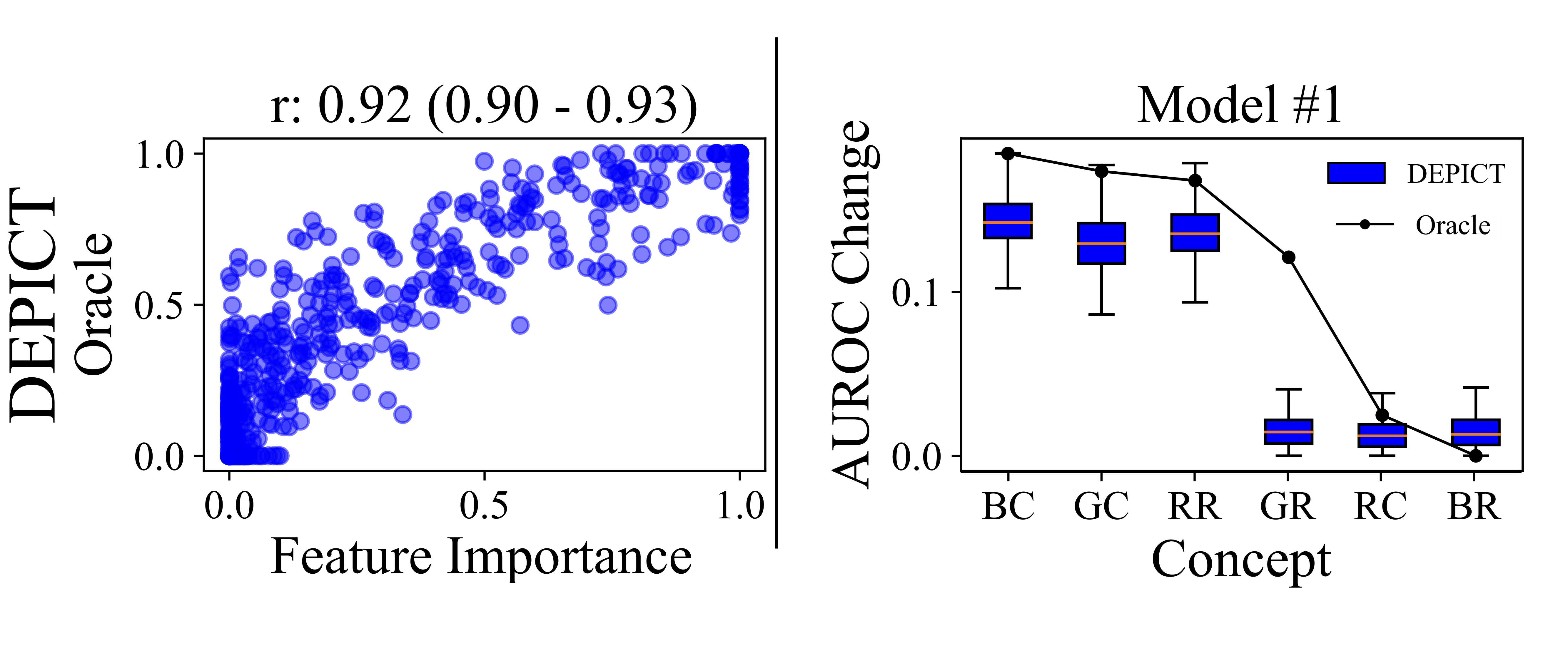 Permutation feature importance has been used to explain tabular-based models. We extend this to images via text-conditioned diffusion to generate dataset-level explanations for image-based models!
Permutation feature importance has been used to explain tabular-based models. We extend this to images via text-conditioned diffusion to generate dataset-level explanations for image-based models!
Measuring the Impact of AI in the Diagnosis of Hospitalized Patients:A Randomized Clinical Vignette Survey Study
Sarah Jabbour, David Fouhey, Stephanie Shepard, Thomas S. Valley, Ella A. Kazerooni, Nikola Banovic, Jenna Wiens*, Michael W. Sjoding*. JAMA 2023. [Link]
 AI model explanations have been proposed to mitigate the harmful effects of innacurate AI, but the utility of such approaches have not been tested. We ran a survey study across 13 states and 450+ clinicians, showing that AI model explanations don’t help clinicians recover from the negative impact of innacurate AI.
AI model explanations have been proposed to mitigate the harmful effects of innacurate AI, but the utility of such approaches have not been tested. We ran a survey study across 13 states and 450+ clinicians, showing that AI model explanations don’t help clinicians recover from the negative impact of innacurate AI.
Learning Concept Credible Models for Mitigating Shortcuts
Jiaxuan Wang, Sarah Jabbour, Maggie Makar, Michael W. Sjoding, Jenna Wiens. NeurIPS, November 2022. [PDF]
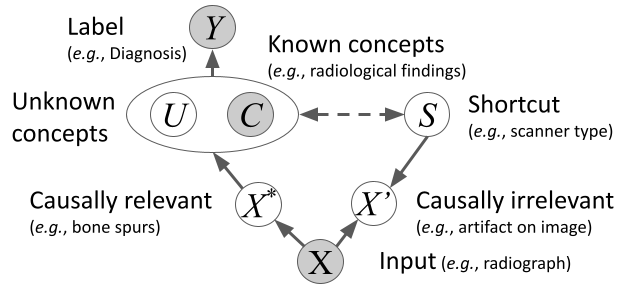 Models can take shortcuts due to spurious correlations and perform poorly out of distribution. We propose a regularization penalty that incorporates domain knowledge to encourage models to use known concepts over unknown, potentially spurious concepts.
Models can take shortcuts due to spurious correlations and perform poorly out of distribution. We propose a regularization penalty that incorporates domain knowledge to encourage models to use known concepts over unknown, potentially spurious concepts.
Combining chest X-rays and electronic health record (EHR) data using machine learning to diagnose acute respiratory failure
Sarah Jabbour, David Fouhey, Ella Kazerooni, Jenna Wiens, Michael W. Sjoding. JAMIA, March 2022. [PDF] [Code] [Bibtex]
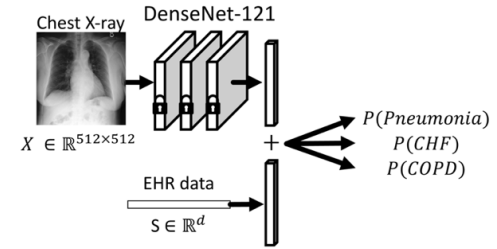 Accurately identifying what is causing a patient’s acute respiratory failure (shortness of breath) is difficult, but essential for determining appropriate treatment. We built a model that can predict the common causes of respiratory failure (pneumonia, heart failure, and/or COPD) based on patients’ chest X-rays and clinical data.
Accurately identifying what is causing a patient’s acute respiratory failure (shortness of breath) is difficult, but essential for determining appropriate treatment. We built a model that can predict the common causes of respiratory failure (pneumonia, heart failure, and/or COPD) based on patients’ chest X-rays and clinical data.
Augmenting existing deterioration indices with chest radiographs to predict clinical deterioration
Emily Mu, Sarah Jabbour, Adrian V. Dalca, John Guttag, Jenna Wiens, Michael W. Sjoding. PLOS ONE, February 2022. [Paper]
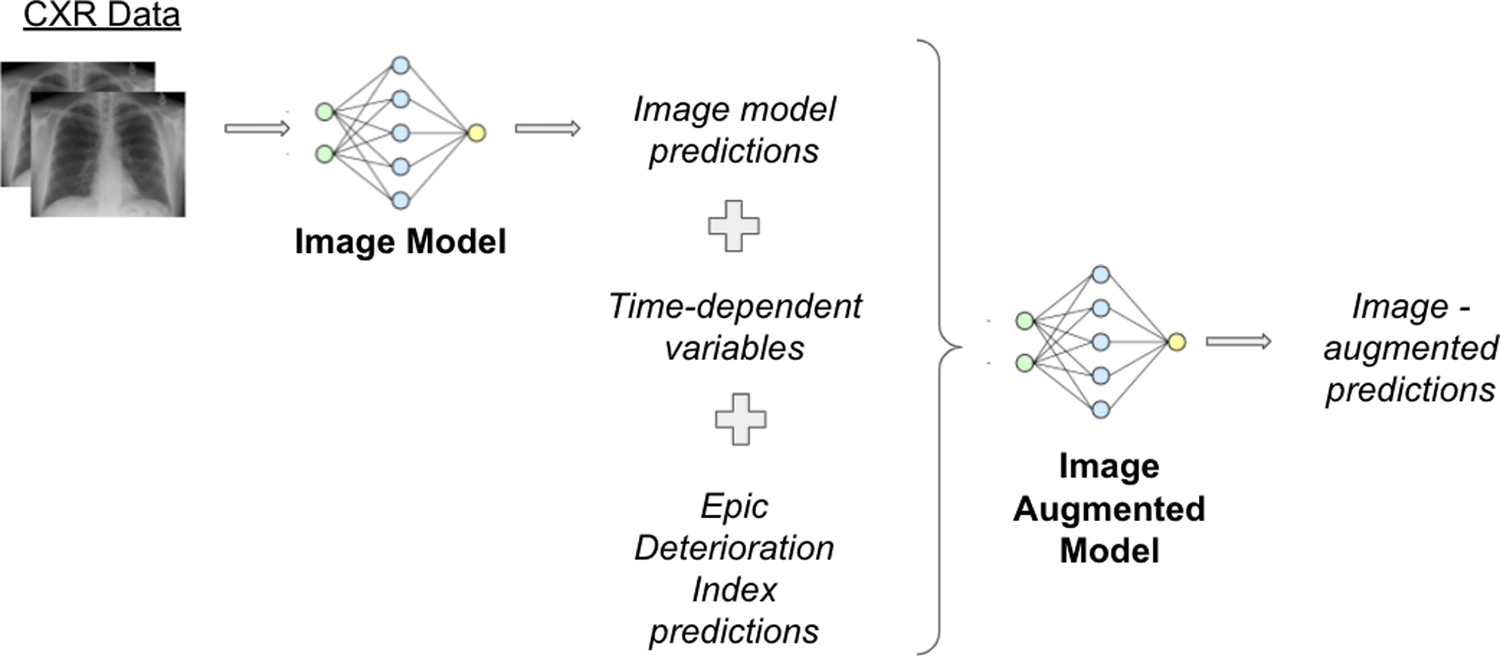
Respecting Autonomy and Enabling Diversity: The Effect of Eligibility and Enrollment on Research Data Demographics
Sarah Jabbour, Kayte Spector-Bagdady, Shengpu Tang, W. Nicholson Price II, Ana Bracic, Melissa S. Creary, Sachin Kheterpal, Chad M. Brummett, Jenna Wiens. Health Affairs, December 2021. [PDF]
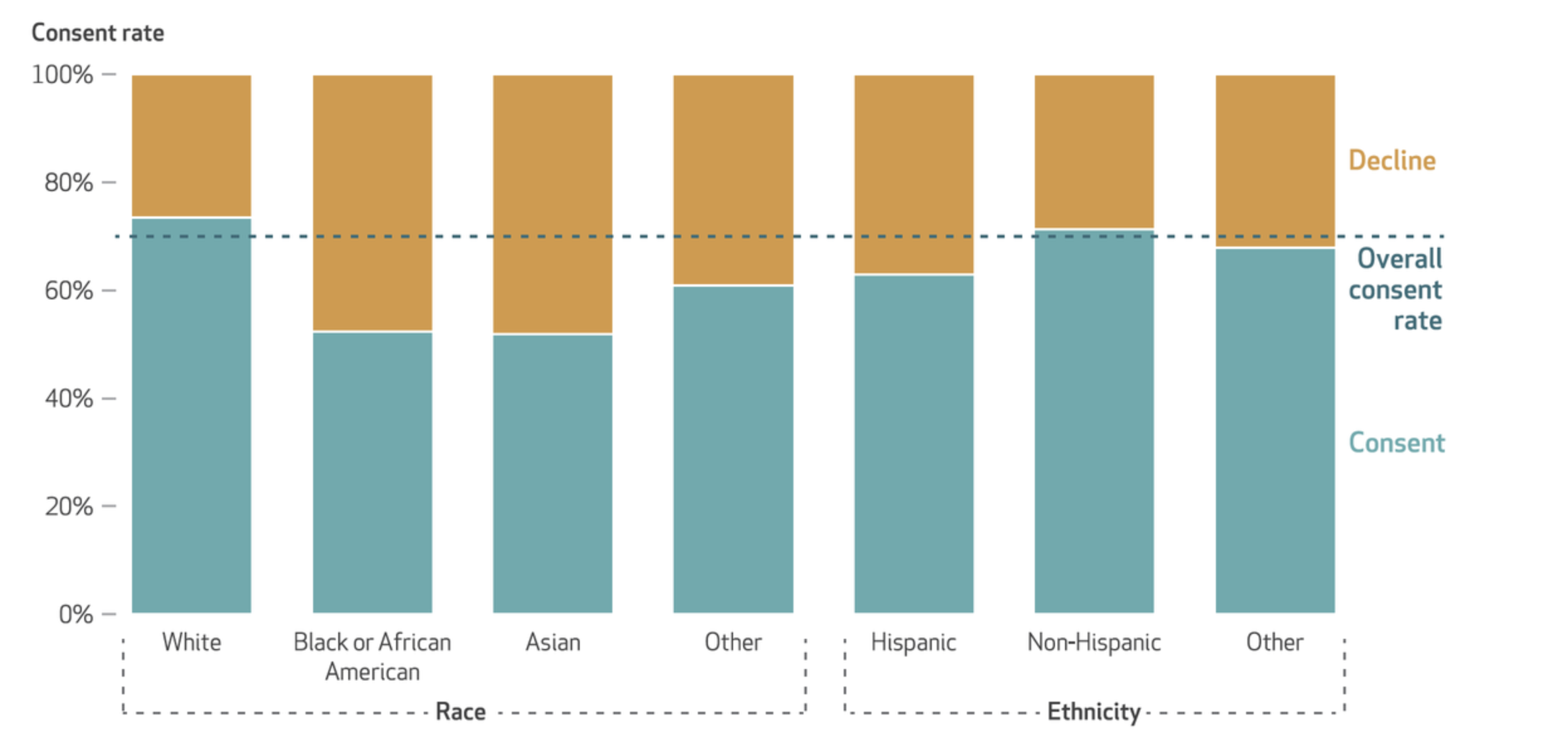 AI/Big Data rely on large datasets, but these datasets are generally populated with demographically homogeneous cohorts. We studied how recruitment and enrollment approaches at a major academic medical center affect the demographic diversity of its research biospecimen and data bank. Compared with the overall clinical population, patients who ended up in the research data bank were significantly less diverse due to both recruitment and enrollment. We need a systemic commitment to diversify data banks so that different communities can benefit from research.
AI/Big Data rely on large datasets, but these datasets are generally populated with demographically homogeneous cohorts. We studied how recruitment and enrollment approaches at a major academic medical center affect the demographic diversity of its research biospecimen and data bank. Compared with the overall clinical population, patients who ended up in the research data bank were significantly less diverse due to both recruitment and enrollment. We need a systemic commitment to diversify data banks so that different communities can benefit from research.
Deep Learning Applied to Chest X-rays: Exploiting and Preventing Shortcuts
Sarah Jabbour, David Fouhey, Ella Kazerooni, Michael W. Sjoding, Jenna Wiens. MLHC, August 2020. [PDF] [Code] [Video] [Bibtex]
 Deep learning models are easily susceptible to the use of features that do not directly cause disease, but rather are correlated with disease in the training population. Since these features may not transfer across populations, we developed an approach to encourage models to use clinically relevant features in the data.
Deep learning models are easily susceptible to the use of features that do not directly cause disease, but rather are correlated with disease in the training population. Since these features may not transfer across populations, we developed an approach to encourage models to use clinically relevant features in the data.
Teaching
Graduate Student Instructor - EECS 442: Computer Vision, Fall 2023. With Andrew Owens.
Teaching Assistant - TO 502: Business Statistics, Core MBA Class, Fall 2016 - Fall 2020, University of Michigan Ross School of Business. With Mohamed Mostagir.
Teaching Assistant - TO 301: Business Analytics and Statistics, Core BBA Class, Fall 2015, University of Michigan Ross School of Business. With Mohamed Mostagir.
